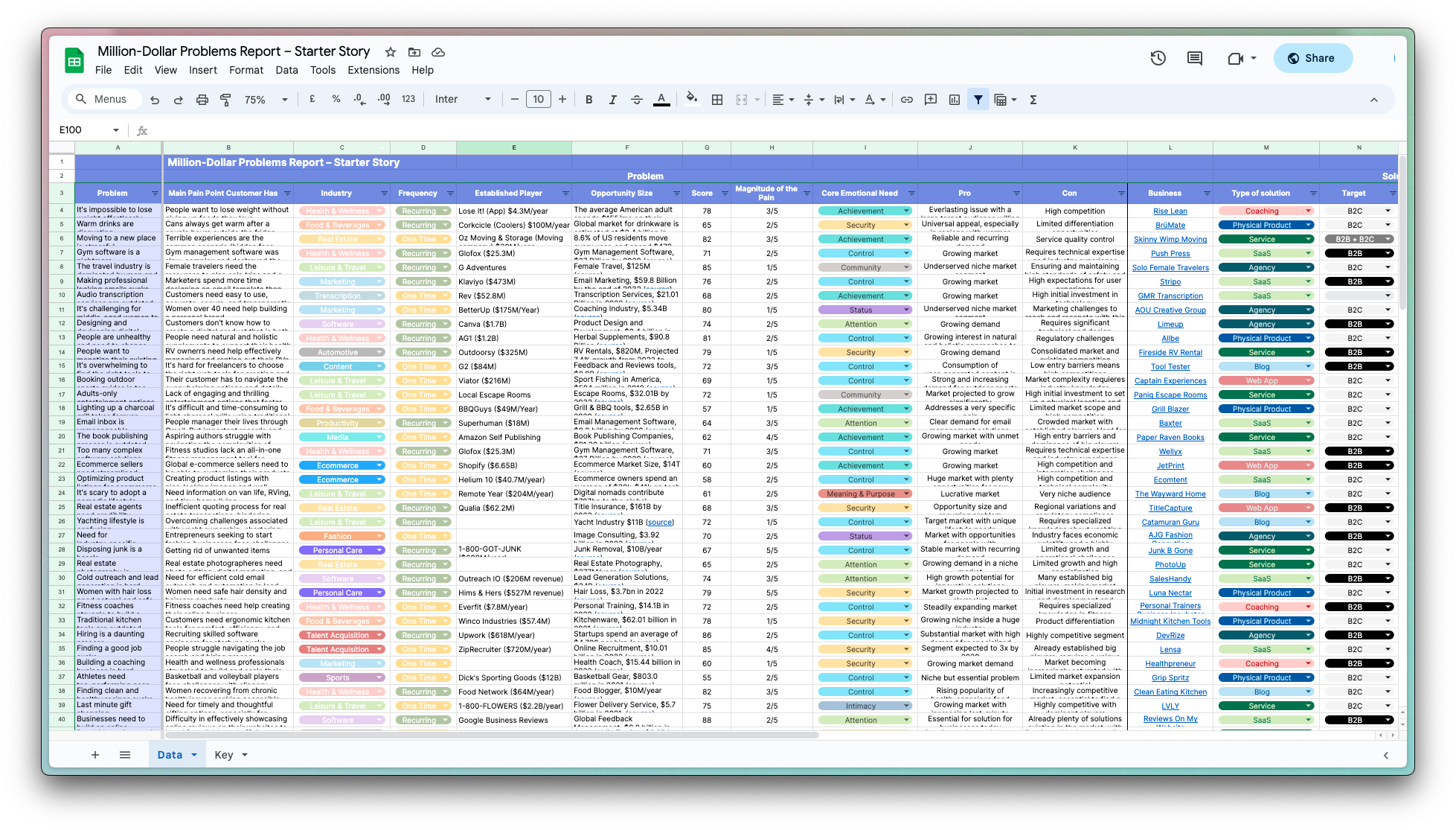|
|
|
$23K
monthly
|
30
days
|
—
per visitor
|
$196
to start
|
91
out of 100
|
|
|
|
|
|
|
|
$150K
monthly
|
—
days
|
—
per visitor
|
$10K
to start
|
52
out of 100
|
|
|
|
|
|
|
AI-Powered SMS Marketing for Shopify Stores
|
$85K
monthly
|
90
days
|
$3.40
per visitor
|
$30K
to start
|
58
out of 100
|
|
|
|
|
|
|
|
$274K
monthly
|
1170
days
|
$1.78
per visitor
|
$65.4K
to start
|
51
out of 100
|
|
|
|
|
|
|
"SEO backlink guide for startup beginners."
|
$5.2K
monthly
|
60
days
|
$1.49
per visitor
|
$500
to start
|
93
out of 100
|
|
|
|
|
|
|
|
$9K
monthly
|
14
days
|
$2.25
per visitor
|
$0
to start
|
90
out of 100
|
|
|
|
|
|
|
|
$100K
monthly
|
41
days
|
—
per visitor
|
$0
to start
|
52
out of 100
|
|
|
|
|
|
|
|
$6K
monthly
|
—
days
|
—
per visitor
|
—
to start
|
65
out of 100
|
|
|
|
|
|
|
|
$7K
monthly
|
—
days
|
—
per visitor
|
—
to start
|
67
out of 100
|
|
|
|
|
|
|
AI-powered video editing for everyone.
|
$20K
monthly
|
100
days
|
—
per visitor
|
$100K
to start
|
39
out of 100
|
|
|
|
|
|
|
"SMS alerts for fast Global Entry interviews."
|
$1.2K
monthly
|
5
days
|
—
per visitor
|
$10
to start
|
91
out of 100
|
|
|
|
|
|
|
Automated financial data organization for banks.
|
$60K
monthly
|
178
days
|
—
per visitor
|
$50K
to start
|
46
out of 100
|
|
|
|
|
|
|
PDF generation tool for non-coders.
|
$15K
monthly
|
90
days
|
—
per visitor
|
$800
to start
|
90
out of 100
|
|
|
|
|
|
|
Content review and approval software for teams.
|
$333K
monthly
|
6
days
|
—
per visitor
|
$200K
to start
|
38
out of 100
|
|
|
|
|
|
|
Form builder integrating smoothly with Notion.
|
$37K
monthly
|
6
days
|
—
per visitor
|
$0
to start
|
90
out of 100
|
|
|
|
|
|
|
Digital workers automating insurance broker tasks.
|
$183K
monthly
|
90
days
|
—
per visitor
|
$10K
to start
|
64
out of 100
|
|
|
|
|
|
|
|
$91.7K
monthly
|
540
days
|
—
per visitor
|
$500K
to start
|
68
out of 100
|
|
|
|
|
|
|
|
$17.5K
monthly
|
60
days
|
—
per visitor
|
$500
to start
|
86
out of 100
|
|
|
|
|
|
|
|
$4K
monthly
|
35
days
|
—
per visitor
|
$200
to start
|
95
out of 100
|
|
|
|
|
|
|
|
$4K
monthly
|
180
days
|
—
per visitor
|
$30K
to start
|
89
out of 100
|
|
|
|
|
|
|
Low-code automation solutions for businesses.
|
$5K
monthly
|
15
days
|
—
per visitor
|
$500
to start
|
95
out of 100
|
|
|
|
|
|
|
|
$14K
monthly
|
120
days
|
—
per visitor
|
$1.4K
to start
|
86
out of 100
|
|
|
|
|
|
|
Affordable FaaS CRM and customer support for SMBs.
|
$12K
monthly
|
180
days
|
—
per visitor
|
$10K
to start
|
52
out of 100
|
|
|
|
|
|
|
|
$30.3K
monthly
|
58
days
|
$1.01
per visitor
|
$200
to start
|
70
out of 100
|
|
|
|
|
























